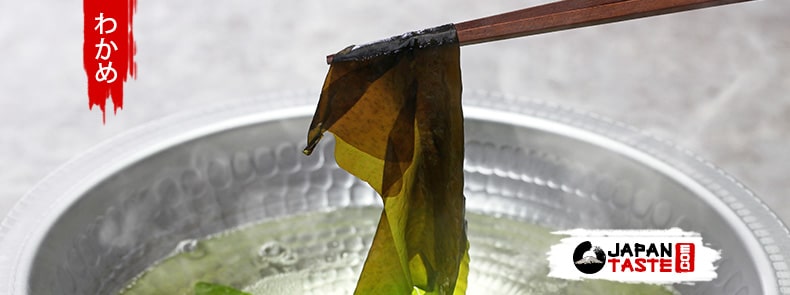Wakame “わかめ” is a brown seaweed of Japanese origin, widely used in Japanese food.
The wakame a wonderful seaweed
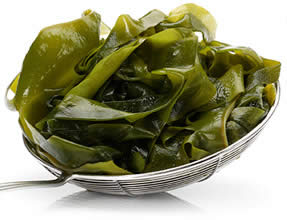 This brown seaweed wakame わかめ is very present in Asia and especially in Japan. And we understand better why when we look at its case. Indeed, in addition to being tasty, it is excellent to health. Rich in vitamins, minerals, fibers, trace elements and especially calcium! As strange as it may seem, its calcium content far exceeds that of milk. And its assimilation is much better! All this makes it a low-calorie and inexpensive staple food. It is one of the ingredients of miso soup, which is consumed daily in Japanese cuisine. Just like konbu or hijiki Wakame has the ability to stimulate metabolism, facilitate waste elimination and provide energy. It is a powerful antioxidant that is also very popular in the development of cosmetics.
This brown seaweed wakame わかめ is very present in Asia and especially in Japan. And we understand better why when we look at its case. Indeed, in addition to being tasty, it is excellent to health. Rich in vitamins, minerals, fibers, trace elements and especially calcium! As strange as it may seem, its calcium content far exceeds that of milk. And its assimilation is much better! All this makes it a low-calorie and inexpensive staple food. It is one of the ingredients of miso soup, which is consumed daily in Japanese cuisine. Just like konbu or hijiki Wakame has the ability to stimulate metabolism, facilitate waste elimination and provide energy. It is a powerful antioxidant that is also very popular in the development of cosmetics.
However, be careful not to consume too much of it. Overconsumption of iodine-rich seaweed in general could lead to thyroid dysfunction. Do not be afraid though. Consumed in moderation it is a real ally for your body. It’s like anything else, you shouldn’t overdo it.
Description and appearance
This sea fern is a bright green when finely chopped for a salad for example and a darker green in a soup. Its texture is very soft and rather gelatinous but this is not at all disturbing in the mouth. Its taste is subtle and doesn’t overwhelm the palate.
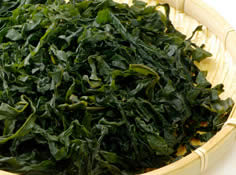
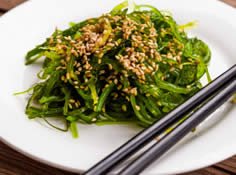
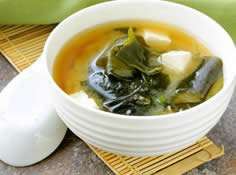
In the shops, it is mostly found dried, or completely dehydrated. It is therefore advisable to use it sparingly, because when it is rehydrated it will take on an impressive volume (it triples in size). Don’t be afraid to use too little. Otherwise you risk to have a seaweed soup instead of a miso soup.
Some organic stores offer semi-dehydrated seaweed in a can of salt, but it should be prepared before using it. You will have to wash it and soak it a little bit to let it dry out a little bit.
And in Japanese cuisine?
Except in miso soup where it is essential, wakame is eaten in salads. Seaweed salads are, in addition to being excellent for health, extremely refreshing, slightly crunchy while melting in the mouth. Well prepared, it is delicious.
However, you should never cook them for a long time and never boil them! This is very important. You must wait until they return to their initial size and not much more. Otherwise you risk to deprive you of its virtues.
In France, we know the wakame seaweed in miso soups and in salads. Here are other ways to cook it in Japan:
Sunomono
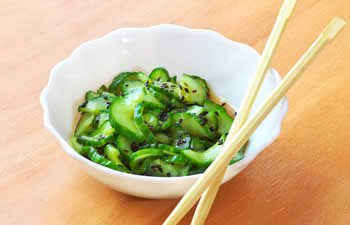
Wakatakeni
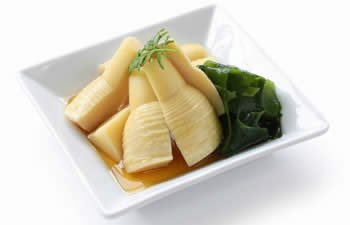
Seaweed in Japanese cuisine is omnipresent because Japan is surrounded by the sea, for the anecdote wakame is also cultivated in Brittany on the island of Ouessant. Indeed, many seaweeds are cultivated in France nowadays because they are more and more appreciated by the French.


